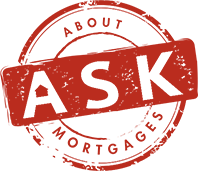Let me design the right mortgage solution for your unique needs.
Stephanie Barritt. Mortgage Broker.
Achieve your financial and home ownership goals. Let's work together. Ask me about mortgages anytime!
Mortgage financing can be confusing, it doesn't have to be when you follow my 3 step plan.
Get started right away
The best place to start is to connect with me directly. The mortgage process is personal. My commitment is to listen to all your needs, assess your financial situation, and provide you with a clear plan forward.
Get a clear plan
Sorting through all the different mortgage lenders, rates, terms, and features can be overwhelming. Let me cut through the noise, I'll outline the best mortgage products available, with your needs in mind.
Let me handle the details
When it comes time to arranging your mortgage, I have the experience to bring it together. I'll make sure you know exactly where you stand at all times. No surprises. I've got you covered.

Stephanie Barritt
Mortgage Broker, AMP.
Hi, I’m Stephanie Barritt, a mortgage professional serving clients in the lower mainland from my office in Surrey BC. Choosing the right mortgage is a big decision. Finding the right mortgage is a powerful tool to help you achieve your financial goals, while getting stuck with a bad one has the potential to cost you a lot of money.
With so many mortgage choices and ongoing decisions to make, how do you know you are making the right choice for you? You need an independent mortgage broker to help guide you! A banker works for the bank, paid by the bank to make money for the bank. As a mortgage broker I can represent you to several different lending institutions who offer a wide choice of products.
The combination of unbiased advice, access to more products, and the fact that
my business that is built on customer service and client education means that when you work with me, you can be assured that your needs are being put first. And in most cases, my services come at no cost to you! Regardless of where you are in the mortgage process. I can help! Ask me about mortgages anytime!
Here are some nice things clients have said about working with me.
I can help you arrange mortgage financing for the following services:









